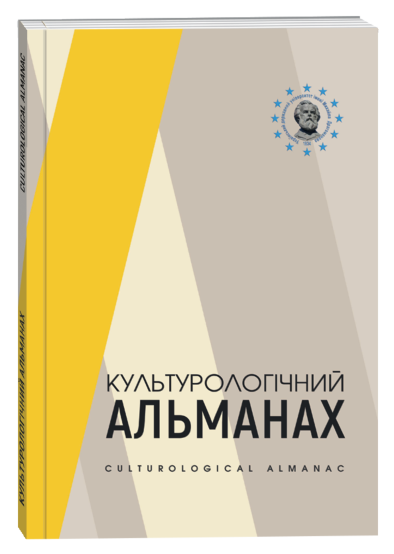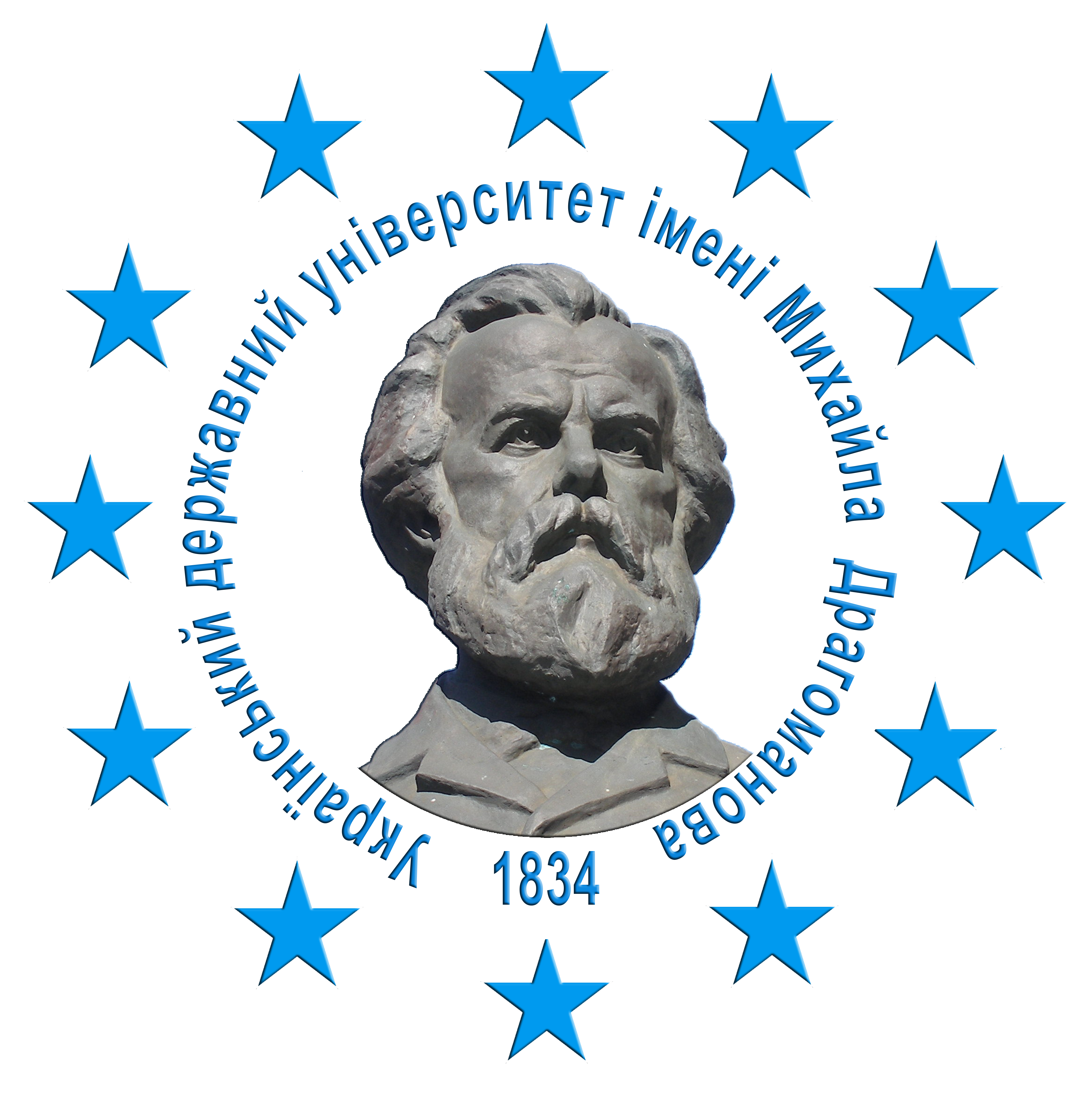ЕВОЛЮЦІЯ КУЛЬТУРНО-МИСТЕЦЬКИХ ПРАКТИК УКРАЇНИ
DOI:
https://doi.org/10.31392/cult.alm.2025.1.50Ключові слова:
глобалізація, соціально-політичний контекст, технологічні інновації, національна ідентичність, трансформаціїАнотація
У роботі проаналізовано вплив соціально-політичних трансформацій та технологічних інновацій на культурно-мистецькі практики в Україні після здобуття незалежності. У роботі акцентовано на тому, що значні політичні події, як-от Помаранчева Революція та Революція Гідності, стали каталізаторами для активізації мистецької діяльності. Мистецькі твори, створені в ці періоди, стали потужними засобами висловлення протесту і соціальної критики, відображаючи виклики, з якими стикалася країна. Художники, письменники та інші митці використовували свої роботи для трансформації національної ідентичності та підвищення соціальної свідомості, адаптуючи традиційні жанри до нових контекстів і проблем. Дослідження було також зосереджено на технологічних інноваціях, що виникають у культурному просторі. Дослідження свідчить про те, що в процесі глобалізації митці інтегрують новітні технології, зокрема цифрові платформи, соціальні мережі та мультимедійні формати, у свої творчі процеси. Це не лише розширило можливості для художнього вираження, але й сформувало нові моделі взаємодії з аудиторією. Інтерактивні інсталяції, онлайн-кампанії та відеоарт стали новими формами соціального активізму, за допомогою яких митці звертають увагу на нагальні соціальні проблеми, як-от війна, бідність, екологічні питання та права людини. Дослідження підкреслило, що культурна продукція в Україні не лише відображає, але й активно формує соціальні зміни, демонструючи цінність мистецтва як механізму для розуміння та реагування на виклики сучасності. Робота запропонувала всебічний огляд синергії мистецтва, суспільства і технологій, акцентуючи на спільному вкладі в процеси демократизації та культурного розвитку, які вони вносять. Завдяки такому підходу, дослідження надало можливість краще осягнути сучасну культуру української держави та її еволюції в умовах глобальних тенденцій.
Посилання
Afyare, A. A. (2021). Globalization’s impact on cultural diversity and identity. URL: https://www.researchgate.net/ publication/382641593_Globalization’s_Impact_on_Cultural_Diversity_and_Identity
Anghel, S., Zbuchea, A. (2023). Artists at War. Europolity: Continuity & Change Eur. Governance, 17, 5. URL: https://www.researchgate.net/profile/Alexandra-Zbuchea/publication/376740768_ARTISTS_AT_WAR/links/ 65ad52b0ee1e1951fbd79db4/ARTISTS-AT-WAR.pdf
Asmolov, G. (2022). The transformation of participatory warfare: The role of narratives in connective mobilization in the Russia–Ukraine war. Digital War, 3(1), 25–37. URL: https://link.springer.com/article/10.1057/s42984-022-00054-5
Бабій, Н. (2020). Актуальні культурно-мистецькі практики та процеси: проблематика наукового дискурсу. Питання культурології, 36, с. 69–78. DOI: https://doi.org/10.31866/2410-1311.36.2020.221047.
Baily, A. (2021). Embracing change: how culture is helping drive Ukraine’s transition. URL: https://www.britishcouncil. org/research-insight/culture-ukraine-transition.
Barata, H., Alves, J. (2023). 24 February 2022-for a Geocinematic Use of Found Images. International Journal of Film and Media Arts, 8(2), 108–132. URL: https://www.researchgate.net/publication/375429818_24_February_2022_-_for_a_ Geocinematic_Use_of_Found_Images
Barshynova, O., Martynyuk, O. (2021). Ukrainian Art of the Independence Era: Transitions and Aspirations. From “the Ukraine” to Ukraine, 207. URL: https://www.researchgate.net/profile/Maxim_Yenin/publication/356415544_From_the_ Ukraine_to_Ukraine_A_Contemporary_History_1991-2021/links/6199686e61f0987720bdde0b/From-the-Ukraine-to- Ukraine-A-Contemporary-History-1991-2021.pdf#page=219
Boichak, O., & Hoskins, A. (2022). My war: participation in warfare. Digital War, 3(1), 1–8. https://doi.org/10.1057/ s42984-022-00060-7
Čeginskas, V. L., & Lähdesmäki, T. (2023). Dialogic approach in the EU’s international cultural relations: joint EUNIC-EU delegation projects as heritage diplomacy. International Journal of Cultural Policy, 29(1), 34–50. https://doi.org/10.1080/10286632.2022.2141719
Ciuriak, Dan. (2022). Social Media Warfare Is Being Invented in Ukraine. Centre for International Governance Innovation: June 15. Available online: URL: https://www.cigionline.org/articles/social-media-warfare-is-being-invented- inukraine/
Державний науково-методичний центр змісту культурно-мистецької освіти. 2024. URL: https://www.dnmczkmo.org.ua/2024/05/inklyuzyvnasereda-05-06-2024/
Dobroier, N. (2023). Cultural exchange and interaction between Ukrainians and Poles during the war in Ukraine. Pomiędzy. Polsko-Ukraińskie Studia Interdyscyplinarne, (10 (3), 33–37.
European Union. (2024). Culture as a creative weapon against the destructiveness of war. URL: https://www.eeas.europa.eu/eeas/culture-creative-weapon-against-destructiveness-war_en
Friedman, T. L. (2022). We Have Never Been Here Before. New York Times. February 25. URL: https://www.nytimes.com/2022/02/25/opinion/putin-russia-ukraine.html
Hersén, L. (2021). “We are more a part of Europe than… Than… Than what?”: Making sense of Ukraine’s place in Europe after the Revolution of Dignity: Master’s thesis. Uppsala: Institute for Russian and Eurasian Studies. URL: https://www.diva-portal.org/smash/get/diva2:1593266/FULLTEXT01.pdf
Higgins, C. (2024). Art shows the surreal reality of wartime Ukraine in a way the news never could. URL: https://www.theguardian.com/commentisfree/2024/feb/25/art-reality-wartime-ukraine-poem-war
Hubernator, O. (2023). Development of Immersive Cultural Practices in Ukraine in the Context of Metamodernism. URL: https://www.intellectualarchive.com/Journal_Files/IAJ_2023_03_13.pdf
Jerie, C. (2023). The meaning of cultural activities in re-inventing a war-affected society. Examining the impact of Ukrainian artists and cultural professionals on Ukraine’s identity transformation since Russia’s full-scale invasion in 2022: Master thesis. Krakow: Jagiellonian University. URL: https://ruj.uj.edu.pl/entities/publication/43f73a0d- 6f35-42b3-92c9-281ba499c56c
Jonsson, S. (2024). What Art knows about democracy. Baltic Worlds, 58. URL: https://balticworlds.com/wp-content/ uploads/2024/04/BW-2024.1%E2%80%932_pages_136.pdf#page=58
Kashay, O. (2024). The Ukrainian art of the 20th – early 21st centuries: An attempt to identify the national context. Ukrainian Academy of Art, 35, pp.76–84. https://doi.org/10.32782/2411-3034-2024-35-8
Копієвська, О. Р. (2019). Культурні практики в дискурсі Cultural Studies. Вісник Національної академії керівних кадрів культури і мистецтв, 2, с. 49–53. https://doi.org/10.32461/2226-3209.2.2019.175374
Kot, S., Mozolevska, A., Polishchuk, O., & Stodolinska, Y. (2024, February). The Discursive Power of Digital Popular Art during the Russo-Ukrainian War: Re/Shaping Visual Narratives. Arts, 13, 1, p. 38. https://doi.org/10.3390/ arts13010038
Leahy, E. L. (2023). State Murals, Protest Murals, Conflict Murals: Evolving Politics of Public Art in Ukraine. Arts 13(1), 1–41. https://doi.org/10.3390/arts13010001
Lobbezzo, M. (2023). War-damaged buildings as a canvas: Banksy’s art in Ukraine. URL: https://www.diggitmagazine. com/papers/war-banksy-ukraine
Luke, B. (2022). ‘Our artists are responding to the war – they have been since 2014’: the rise of documentaries in recent Ukrainian art. URL: https://www.theartnewspaper.com/2022/04/11/ukrainian-artists-are-responding-to-the- warthey-have-been-since-2014
Mick, C. (2023). The Fight for the Past: Contested Heritage and the Russian Invasion of Ukraine. The Historic Environment: Policy & Practice, 14(2), 135–153. https://doi.org/10.1080/17567505.2023.2205703
Murray, E. (2022). Heavenly fighters for Ukrainian civil society: the cultivation of democratic culture through the memorialization of the Revolution of Dignity: Doctoral dissertation. Victoria: University of Victoria. https://dspace.library.uvic.ca/items/c2fd41bb-a5e1-4374-abe5-c3e9a7fef6db
Nosyriev, O., & Bukina, T. (2021). Socio-cultural transformation of Ukraine in the context of European values. Three Seas Economic Journal, 2(1), 110–115. http://baltijapublishing.lv/index.php/threeseas/article/download/1155/1195
Ober, J., Rusakov, S., & Matusevych, T. (2024). The effects of the war in Ukraine on the environment of Ukrainian artists: An evaluation by a diagnostic survey. Media, War & Conflict, 17506352241269604. https://doi.org/10.1177/17506352241269604
Olzacka, E. (2024). The development of Ukrainian cultural policy in the context of Russian hybrid aggression against Ukraine. International Journal of Cultural Policy, 30(2), 141–157. https://doi.org/10.1080/10286632.2023.2187053
Пахаренко, В. (2021). Метамодернізм як мистецький напрям : роздуми про новий тип світосприйняття . Українська Мова та Література, № 7–8, с. 56–68. URL: https://lib.iitta.gov.ua/id/eprint/728820.
Pesenti, M. (2020). Cultural revival and social transformation in Ukraine. The Role of Culture and the Arts in Supporting Post-Euromaidan Resilience. London: Chatham House. URL: https://www.chathamhouse.org/sites/default/ files/2020-11/2020-11-16-cultural-revival-and-social-transformation-in-ukraine-pesenti_0.pdf
Pesenti, M. (2021). Ukraine’s cultural revival is a matter of national security. URL: https://www.atlanticcouncil.org/ blogs/ukrainealert/ukraines-cultural-revival-is-a-matter-of-national-security/
Pipere, A., & Mārtinsone, K. (2022). Metamodernism and social sciences: Scoping the future. Social Sciences, 11(10), 457. https://doi.org/10.3390/socsci11100457
Plungian, N. (2020). Beyond contemporary art institutions. In Curating Under Pressure: International Perspectives on Negotiating Conflict and Upholding Integrity, (pp. 176–182). London: Routledge.
Povoroznyk, O. (2024). Ukrainian artists struggle with war’s impact. URL: https://foreignpolicy.com/2024/02/24/ ukraine-art-russia-war-loss-authenticity/
Roenberg, H. (1994). The tradition of a new. Boston: Da Capo Press. https://www.amazon.com/Tradition-New- Harold-Rosenberg/dp/0306805960
Ruble, B. A. (2022). Heroic arts: The remarkable story of Ukrainian artists confronting Russia. URL: https://www.wilsoncenter.org/blog-post/heroic-arts-remarkable-story-ukrainian-artists-confronting-russia
Ruble, B. A. (2023). The arts of war: Ukrainian artists confront Russia, year one. Hannover: Ibidem Press. URL: https://www.ibidem.eu/en/Topics/Liberal-Arts/Arts/THE-ARTS-OF-WAR-Ukrainian-Artists-Confront-Russia- Paperback.html
Snayder, T. (2023). Ukrainian culture in the twenty-first century (lecture). URL: https://snyder.substack.com/p/ ukrainian-culture-in-the-twenty-first
Stoev, D. (2022). Metamodernism or metamodernity. Arts, 11(5), pp.1–26. https://doi.org/ 10.3390/arts11050091
Świetlicki, M. (2019). Mój tato został gwiazdą. Tanatos w ukraińskiej książce obrazkowej. Slavica Wratislaviensia, 168, 197–206. URL: https://cejsh.icm.edu.pl/cejsh/element/bwmeta1.element.desklight-0922e80e-e51f-4303-a4a8-df1e2b2f9189
Szerszeń, T. (2023). Painful Images: Ukraine 1993, 2014, and 2022 Arts 13(1), 8. URL: https://www.mdpi.com/ 2076-0752/13/1/8/pdf
Szpociński, A. (2021). Culture of peace in development and regression: Ukrainian culture in Polish culture in the twentieth century and today. In The Politics of Memory in Poland and Ukraine (pp. 136–149). Oxfordshire: Routledge. URL: https://www.taylorfrancis.com/chapters/edit/10.4324/9781003017349-11/culture-peace-development-regression- andrzej-szpoci%C5%84ski
Vermeulen, T., van den Akker, R. (2015). Metamodernism. Supplanting the Postmodern: An Anthology of Writings on the Arts and Culture of the Early 21st Century, (pp. 309-329). New York: Bloomsbury Academic. URL: https://dokumen.pub/supplanting-the-postmodern-an-anthology-of-writings-on-the-arts-and-culture-of-the-early-21st- century-9781501306877-9781501306860-9781501306907-9781501306891.html
Williams, R. (2014). Raymond Williams on culture & society: Essential writings. Washington: SAGE Publications. URL: https://sk.sagepub.com/books/raymond-williams-on-culture-and-society
Wuysang, J. M., Patriani, I., & Herawati, N. (2023). Misrepresentation of Russian Interests in the Russo-Ukrainian War: The Closure of News Offices in Russia. Technium Social Sciences Journal, 49, 305. https://doi.org/10.47577/tssj. v49i1.9820








